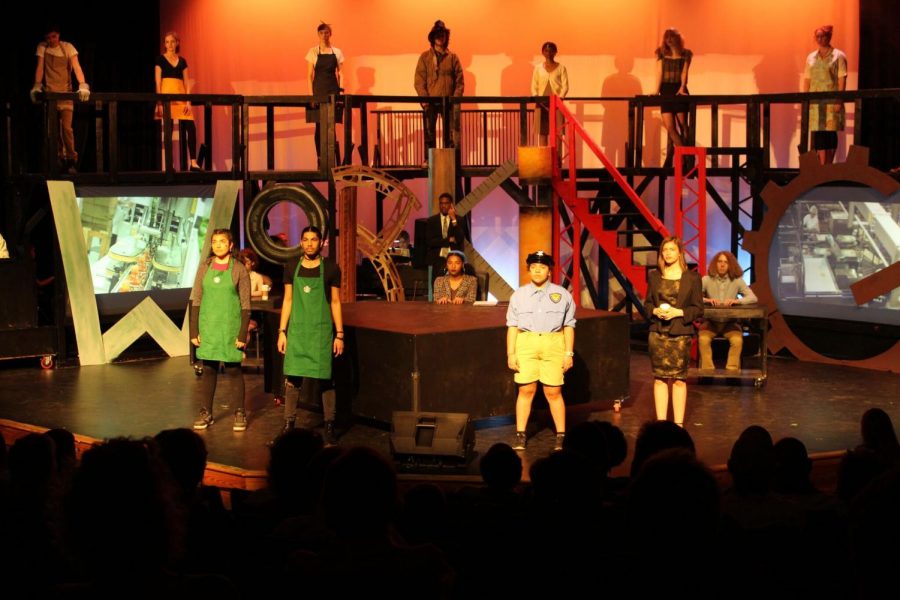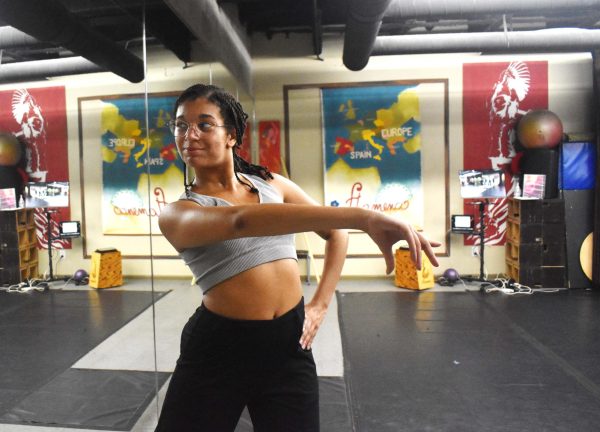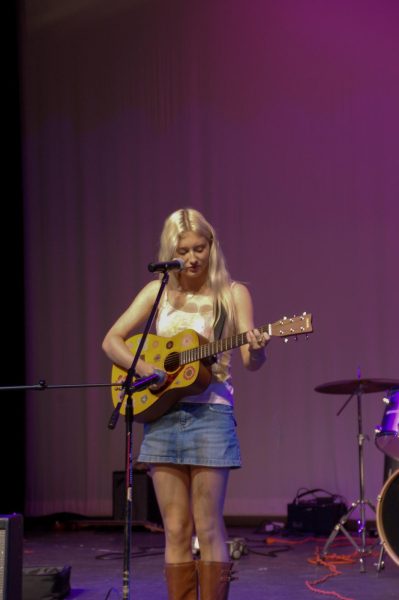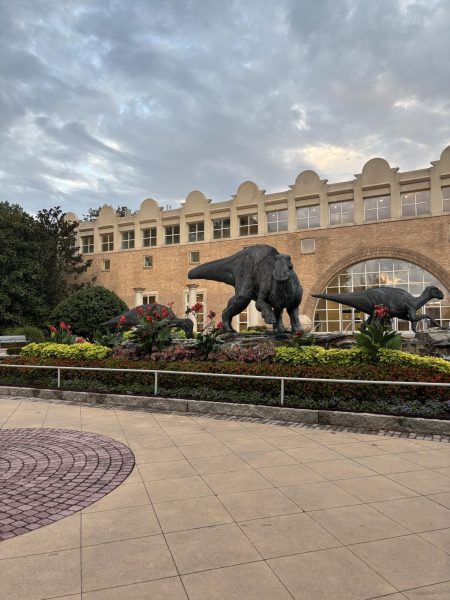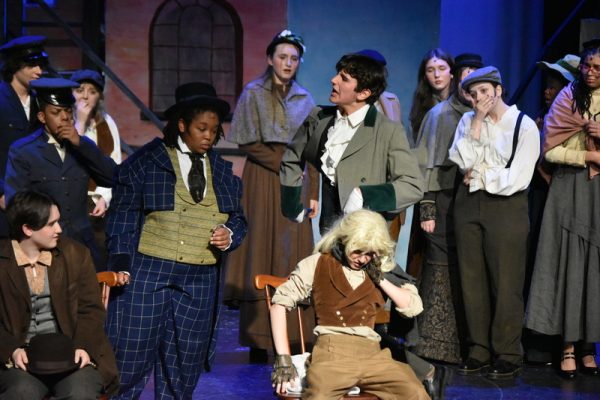‘Working’ showcases seniors’ talents as year ends
Centered in the middle of Grady’s Vincent Murray Theater stands a young waitress, leaping from table to table. In another scene, a maid sweeps crumb after crumb off of the floor. At the conclusion of the play, approximately 30 workers of all professions stand across the stage, singing as one.
From March 22-24, Grady’s theater department performed the 2012 version of the musical “Working.” Stephen Schwartz and Nina Faso adapted the play from Studs Terkel’s book “Working: People Talk About What They Do All Day and How They Feel About What They Do” (1974).
“I believe the story is a celebration in all of the different senses that we do work and [of] the different stories that different individual laborers or workers have about the work that they do,” said director and English and theater teacher Lisa Willoughby. “I think Terkel wanted to suggest that all labor has purpose and meaning and is worthy of celebration and that all individual stories are important.”
Unlike many musicals, “Working” does not have a continuous plot, but is rather a collection of individual stories of people working different jobs. When writing his book, Terkel interviewed a number of people in different professions to show the importance of jobs in all walks of life.
In the 1980s, Willoughby saw the musical for the first time on a PBS special. Since then, she has had numerous experiences with the play, each time finding a new favorite scene or connecting to it differently than before.
“[When I first saw the play], I had just started working as a waitress, so I connected with that,” Willoughby said. “I really loved the idea that she does this medial, difficult job, but the attitude that she has about doing that job makes it something beautiful. I think that shaped a lot of the way I thought about the play, that it was giving this message that how we think about our work is almost as important as the work itself.”
To help the cast find inspiration with their roles, Willoughby encouraged the actors to research and expand their knowledge of the play past the script.
“The process that I’ve tried to use in this is to try to connect the students with the source material,” Willoughby said. “I’ve asked them each to read the original interviews and try to conduct an interview with someone who does that kind of job today if that’s possible, and some of them have done that.”
Senior Dhruv Mehra, who plays a lead role as iron worker Mike Dillard, recognizes the authenticity that Willoughby wants to bring to the characters.
“I never was actually able to do an interview with a real iron worker, but I spent some time researching what kind of tools an iron worker uses since I had to put together my own costume,” Mehra said.
Since his freshman year, Mehra has been an involved member in theater and currently serves as the president of Grady Drama’s student board.
“When I was a freshman, I did tech for “Urinetown,” another musical directed by Ms. Willoughby and the first musical I had ever participated in,” Mehra said. “I wore these overalls, boots and a hard hat. As Mike, I wear a very similar costume. I think it’s kind of cool I’m inhabiting a similar role from my first to last musical, especially since Ms. Willoughby was the director both times.”
Portraying Mike was not a challenge for Mehra, as the two have similar qualities.
“I think Mike suits me fairly well,” Mehra said. “He works with his hands and really takes pride in his work. I love building things and working with my hands as well, so that was something I was able to grasp onto pretty naturally.”
For senior Elizabeth Lansing, choreographing the musical was difficult at times, but also rewarding.
“This, by far, has been the biggest challenge of all of the shows I have choreographed,” Lansing said. “I have been pushed because it’s a whole new style than I have ever choreographed before; it’s not really your ‘classic’ musical theater that I’m used to. I have learned a lot about myself and my stress levels.”
In the past two years, Lansing choreographed Grady’s productions of “Grease” and “South Pacific,” plays she was more familiar with. For “Working,” Lansing watched videos of other productions of the musical to choose choreography for Grady’s.
As Willoughby directed the play, she appreciated the talent of the cast, but also their support and the support of the community.
“I always talk about how I think one of the things that is beautiful about theater and one of the reasons I’m so passionate about is because it’s truly a community art form,” Willoughby said. “Theater cannot exist without at least an actor and an audience. Even at its most basic level, you have to have community.”
Mehra feels that audiences were able to connect with the relatability of the many roles and the story that the musical presented.
“Something may touch [one person] that doesn’t touch other people, and with this show especially, it’s so relatable because it describes so many walks of life,” Mehra said. “Everyone will have something to relate to. That’s what this show is about.”
Hi I'm Max Nevins and I'm the Lifestsyle Associate Managing Editor. This is my second year writing for The Southerner and last year I was a Junior Online...

